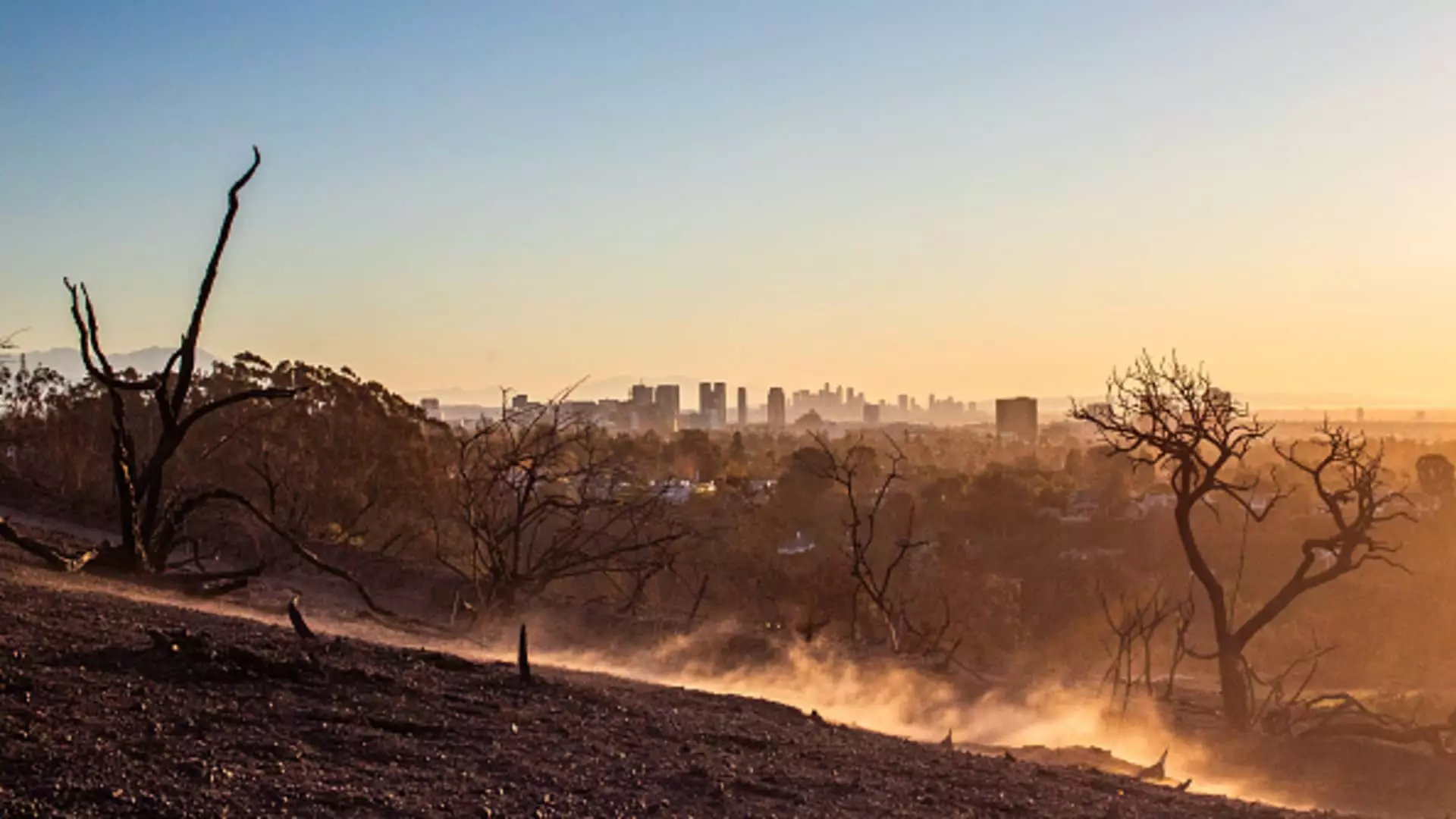The insurance landscape is undergoing a seismic shift, primarily driven by the escalating frequency and severity of wildfires, particularly in regions like Los Angeles. Historically, these disasters have consistently increased premiums, but the recent wildfires could push costs to unprecedented levels. Estimates suggest that the insured losses from these blazes may exceed $20 billion, making this disaster potentially the costliest in U.S. history. As the country grapples with climate-related challenges, how do homeowners navigate these rising costs?
Insurance companies are now facing an undeniable reality: the risks associated with natural disasters are both increasing and diversifying. Analysts like Patrick Douville of Morningstar have indicated that premium hikes are not only imminent but essential for long-term financial viability. As insurers struggle to account for increased claims—where filing one claim can raise premiums by nearly 29% and two claims by an alarming 60%—it becomes crucial to understand the factors driving these changes.
More ominously, California’s Department of Insurance recently implemented regulations that permit rate increases in exchange for broader coverage in fire-prone areas. We have observed significant spikes, with hikes reaching up to 34% in 2024, sending shockwaves through communities already grappling with financial strains.
Though homeowners outside California may breathe a sigh of relief, believing their premiums won’t rise based on a single state’s disasters, the reality is more complex. While state regulations shield residents from direct financial repercussions from events outside their jurisdiction, the broader marketplace feels the stress. Janet Ruiz of the Insurance Information Institute notes that severe weather patterns affect risk evaluations nationwide, meaning rate adjustments in less-regulated states could occur as insurers balance their books.
Moreover, studies reveal a disconnection between premium rates and risk, especially as the balance of natural disasters shifts. A paper by economists linked to elite institutions raises questions about the sustainability of the current insurance model as these disasters intensify.
Westward in Vermont, despite looser insurance regulations, the concerns voiced by insurance agents mirror those in California. Following recent inundations, local insurance professionals have been inundated with inquiries about potential premium increases. “An increase in natural disasters will impact insurance going forward,” said Michael Barrett, underscoring the growing awareness among homeowners nationwide. The broader implications of such extreme weather aren’t lost on anyone, given that nearly 50% of American homes face the risk of severe environmental damage.
Last year alone, over two dozen natural disasters prompted billion-dollar damages, amplifying the risk landscape and increasing homeowner vulnerability. Alarmingly, the National Oceanic and Atmospheric Administration reported that these calamities are expected to rise, prompting an urgent need for homeowners to engage proactively with their insurance providers.
In an era where rebuilding costs have skyrocketed—evident as prices for reconstruction leap from $166 to $300 per square foot—many homeowners remain oblivious to the potential pitfalls of underinsurance. Many may choose to maintain coverage levels established years prior, unaware that prevailing market conditions necessitate adjustments. Notably, a substantial segment of homeowners is underinsured against flooding, as typical homeowners and renters insurance policies do not encompass this risk.
NerdWallet experts emphasize the importance of obtaining updated estimates for rebuilding costs—essential knowledge for homeowners to ensure they are adequately protected. As inflation continues to compound the challenges of home rebuilding, it is crucial for homeowners to have an accurate assessment to mitigate risks of underinsurance, which could leave them exposed in the event of a disaster.
Taking control of insurance needs begins with education. Homeowners are encouraged to review policies annually and engage local contractors or insurance agents to establish current rebuilding costs. Additionally, individuals should assess if flood insurance is necessary based on proximity to flood-prone areas—a crucial consideration for many.
Further, understanding what coverage options extend beyond basic policies can also assist homeowners in safeguarding their investments. With numerous national and regional disasters looming, forethought in insurance planning will prove invaluable for homeowners navigating this shifting landscape.
As we confront a future marked by climate change and escalating natural disasters, the insurance industry is poised for transformation. For homeowners, the imperative of understanding these emerging dynamics will shape their financial stability. Engaging openly with insurance providers and adjusting coverage to reflect the ever-evolving threats of extreme weather is no longer optional but a necessary step in protecting oneself and one’s home. As much as the insurance landscape is reshaping, it remains crucial for individuals to remain proactive in safeguarding their interests amid a rising tide of uncertainty.


Leave a Reply